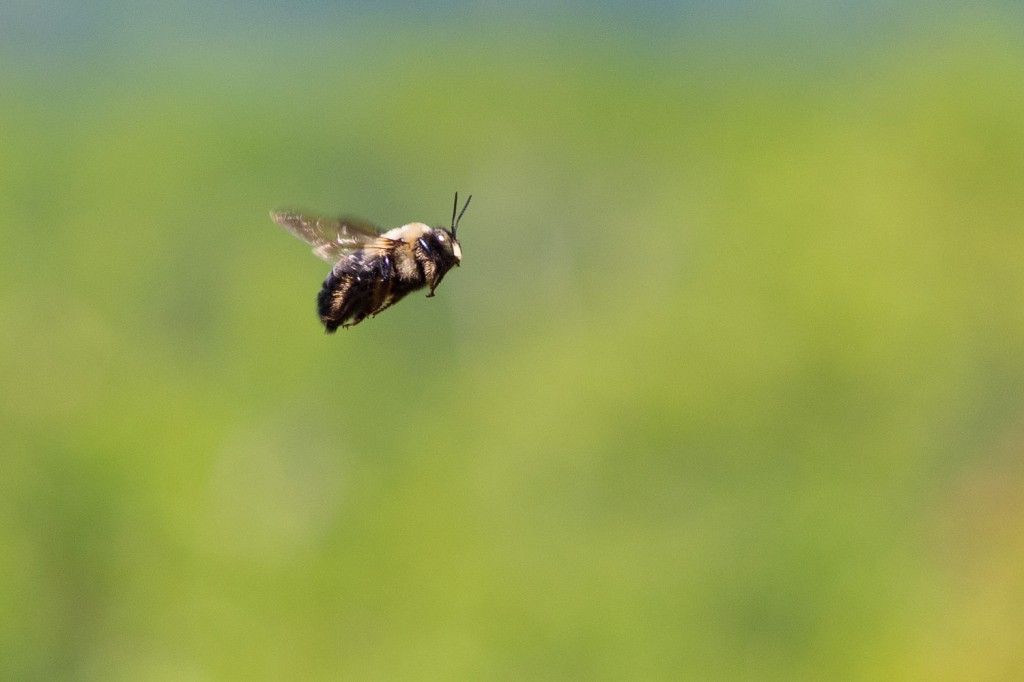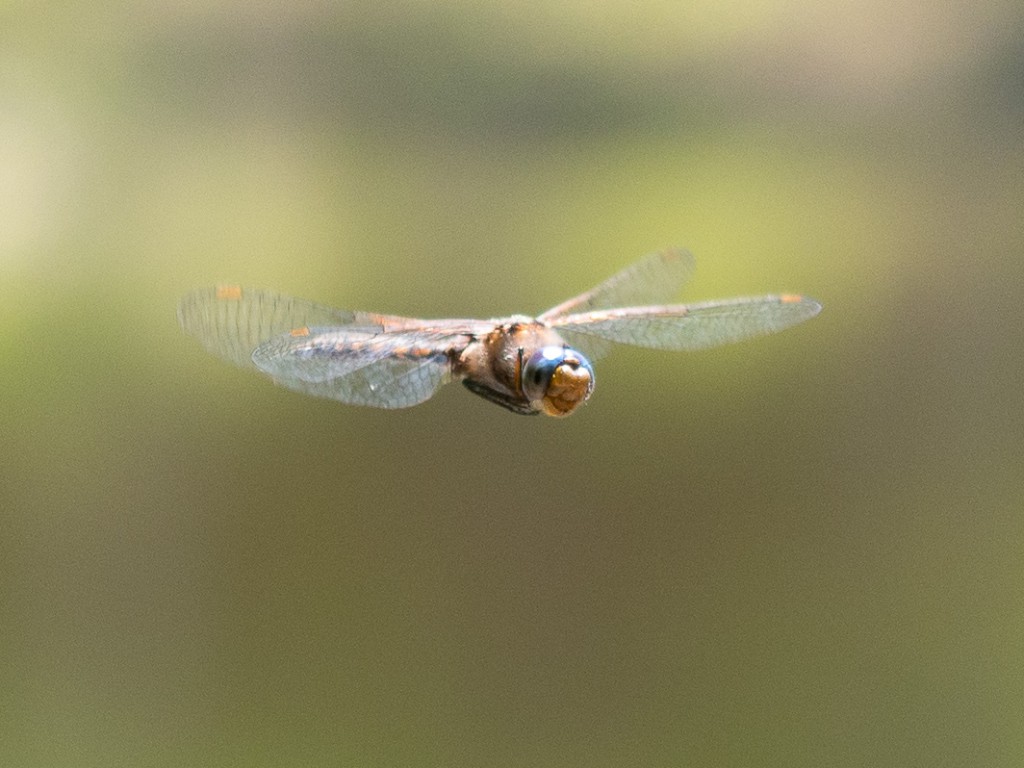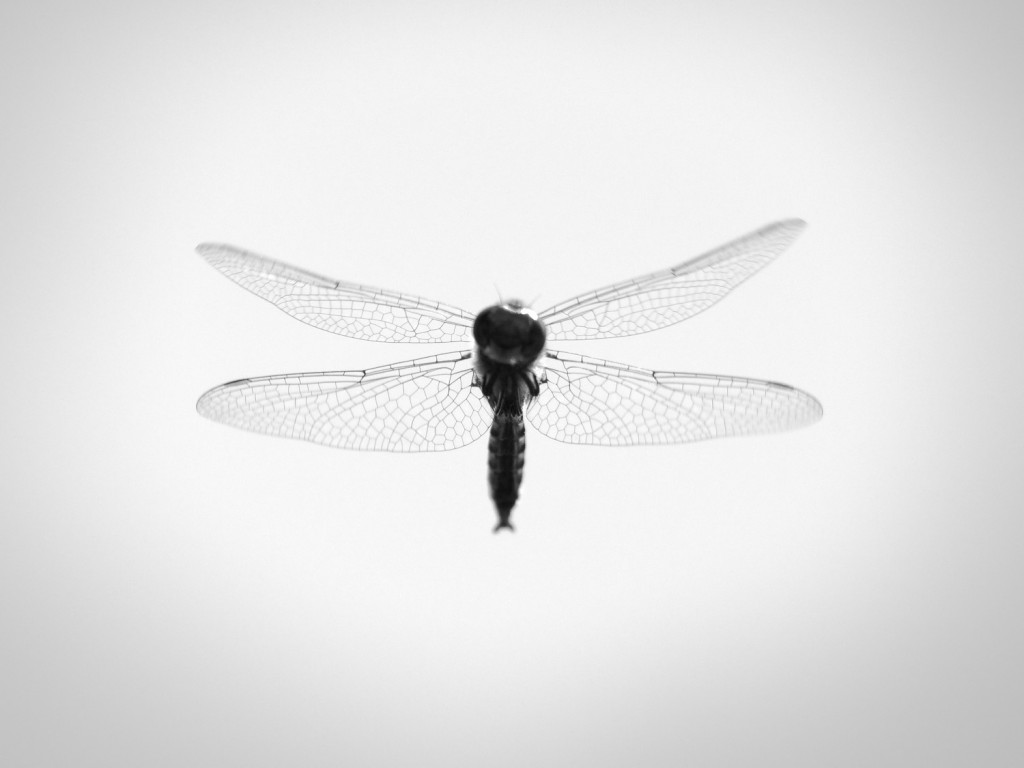Recently I’ve been having fun taking photos of insects in flight. It is difficult, but rewarding when it works.
You can buy fancy motion triggers, but I’m interested in techniques that use the normal equipment I usually carry. I’ve been using my Olympus E-M5 with the Olympus 75mm f/1.8 and Olympus 60mm f/2.8 Macro.
The best lesson I learned is to not chase the bugs. They are too erratic. Instead, I start by observing their flight patterns. Some insects repeatedly follow roughly the same path. I noticed this particularly in dragonflies and bumblebees. After a while, I found areas where the insects would frequently hover. Then I could get ready and hang out in that spot.
I use auto focusing since I can’t react fast enough in this situation. Before the insect arrives, I make sure I am focused at roughly the right distance. My lenses can focus quickly, but they are much faster if they are already close to where they need to be.
The focus is more forgiving if you use a small aperture, but I usually go pretty wide, so I end up with a blurry background. Burst mode helps the likelihood of getting a good shot. I end up with a ton of photos, but it is worth it if I get a good one.
The photo above didn’t have much color, so I converted it to black & white with Exposure. I tweaked the tone curve to bring out detail in the wings and added a slightly lumpy vignette.
I’m still learning how to do this without driving myself crazy. It is pretty frustrating to spend an hour and only get a few great shots. I’ll give you an update if I learn more lessons. If you have any tips, I’d love to hear them!
Try Exposure Today


















Jeff,
Those are some incredible shots! I’ve been buggy about bugs for a while, but have never had the patience to wait for them to take a photo on the wing. Heck, I’m lucky to get a good shot while they are landed.
Great pics and tips Jeff! Thanks. I have yet to get an in flight pic, but I can relate to sitting out in the heat taking pictures of bugs.
This is a fun post, thank you! The other day I was photographing spiderwebs, now I’d like to give insects in flight a shot. I am not sure, however, if I have the patience! ;)
Love it, Jimmy. I have an oddball tool that is helpful (though not inexpensive)… http://bushhawk.com/ Pretty cool. Camera mount on a gun stock, trigger ties to camera release via cable.
I agree – this is interesting photography, and it does require some patience and observation. The exercise itself enables you to see things in creation you would not otherwise. As with all photography, to capture it & view it – at will – allows the experience to last longer. My DSLR and lenses are old, but I have a lot of fun anyway.
Oops – this one looks a little better – with added vignette to hide some things.